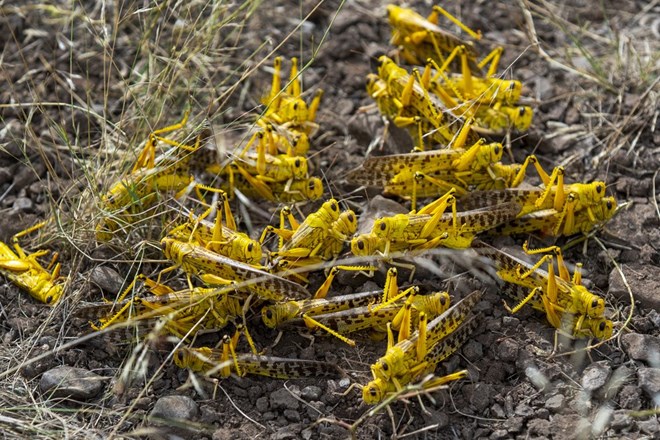
Thursday March 18, 2021
Desert locust swarms continue to decline in Kenya and Ethiopia thanks to ongoing control operations and no breeding, according to a report by Locust watch.

File photo: Saturday, Feb. 1, 2020, a group of desert locusts mate on the ground in Nasuulu Conservancy, northern Kenya. (AP Photo/Ben Curtis).
The absence of rainfall has caused the swarms to remain immature and are awaiting the start of the rains to mature and breed. However, showers being currently experienced could initiate breeding.
In Kenya, a few small immature swarms were seen in the past few days between Mt. Kenya and the Rift Valley in Nyandarua, Nakuru and Baringo counties.
In Ethiopia, immature swarms persist in the Ahmar Mountains east of the Rift Valley in Oromia (Bale, Borema, Arsi) between Awasa and Harar, but appear to be declining in southern SNNP (South Omo, Konso).
newsinsdeIn Somalia, late instar hopper bands are present in the northwest (Somaliland) and the northeast (Puntland) where a limited number of immature swarms continue to form. Other areas in the northeast are likely to contain locusts but cannot be accessed.
There is cautious optimism of signs that the current upsurge is winding down in the Horn of Africa, especially if poor rains limit breeding, followed by equally poor rains during the summer in northeast Ethiopia. However, it will be essential to sustain current survey and control operations in Ethiopia, Kenya and Somalia, and maintain vigilance in case there is any unusual rainfall.
In Sudan, limited breeding continues along the Red Sea coast near Tokar Delta where control operations are in progress against a few hopper bands and groups of hoppers and adults. In Eritrea, a few hopper groups are present on the central coast near Massawa.